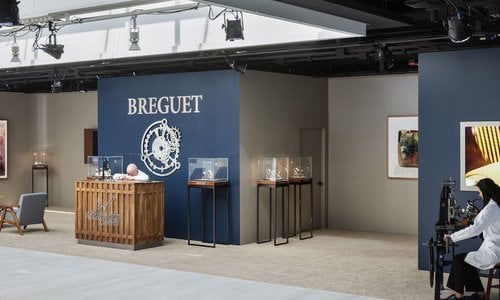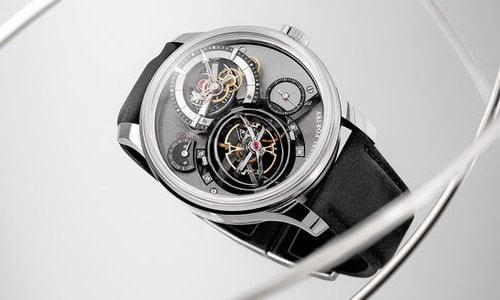We won’t go into detail about the long history of Longines, whose timekeeping beginnings date back to 1832 when Auguste Agassiz started his horological atelier. It was later taken over by his nephew, Ernest Francillon, who, in 1867, moved the small company to a place known as Les Longines, where fields stretched along the small Suze River.
The brand’s 175-year old history is made up of a vast fresco marked by a continuous industrial approach to the art of timekeeping. The construction and fabrication of calibres and movements is at the heart of the Longines story. This is well documented in the voluminous book, published on the occasion of this important anniversary, entitled At the Heart of an Industrial Vocation – Longines Watch Movements (1832-2007) – Tradition, Know-how, Innovation, written by a young historian, Patrick Linder, from the University of NeuchÂtel. Leafing through the volume’s more than 600 pages, we discover, step by step, the various phases of the organization and rationalization of the brand’s watch production. Longines’ entire industrial tradition, as opposed to more artisanal approaches such as those seen in the VallÉe de Joux, is explained and described in detail.
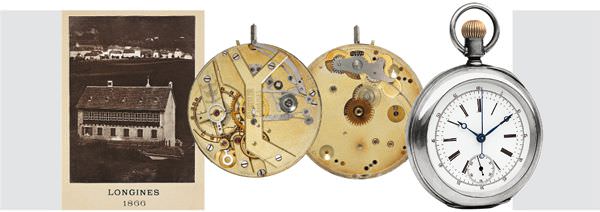
The legendary 20H
The 20H calibre was the first simple chronograph made by Longines in 1878. It is a single-pushbutton chronograph that features a central seconds hand that becomes connected to the movement when the winding stem is pushed once. A second push stops the hand, while a third push returns the hand to zero.
Making volume
It is this ‘industrial vocation’, confirmed by the creation of more than 500 calibres, that permits Nick Hayek Jr. to insist loudly and clearly that the “future of Longines is in volume, with a good design, a good price, and good quality. Its future is not in moving up-market.”
During the brand’s anniversary celebrations, Nick Hayek Jr. was joined by an elated Walter von Kaenel, the CEO of Longines, who spoke less about the brand’s past as he did about its future, which he described as indeed bright. “Longines is one of the brands that is rising the fastest in the Swatch Group. It will soon become the third largest brand in the group.” Insisting on this point, von Kaenel affirmed that Longines had “the potential to reach CHF one billion in turnover within three years” (compared to about CHF 600 million today, the same as Breguet and Tissot, but behind Swatch and Omega, which is number one with CHF one billion in turnover). He also proclaimed that its profit margin was ‘excellent’.
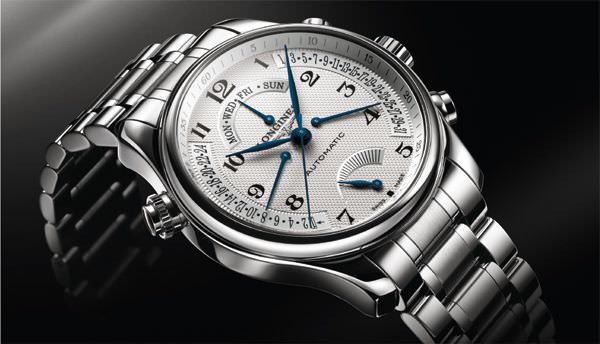
MASTER COLLECTION RETROGRADE
Space left by Omega
Contrary to what is happening at many other brands, this rise in strength is not occurring due to a rise in market position. It is partially being made possible, however, by Omega’s move up-market. “Omega is gradually leaving the range of products priced between CHF 1,000 and 2,500. This offers Longines the opportunity to expand into this space,” explained Nick Hayek Jr. And how better to fill this space than with sports watches?
Walter von Kaenel explained that Longines had every reason and legitimacy to enter into the domain of the sports watch. “Wasn’t it already in 1878,” he declared, “when Longines began to create connections with the sports world by producing its first simple chronograph, equipped with the 20H movement?”
Present in Athens during the first Olympic Games in 1896, Longines has been a part of the history of timing. The company also experimented with a ‘cut thread’ timing technique in 1912 in Switzerland. In 1952, it created the Autogines system of linking a control image with measured time, while in 1960, it combined imaging and timing.

Faster, Further, Higher, Deeper
Longines’ relationship with sports also includes a number of particular areas such as: speed (timing speed records on the ocean and on land, with the famous Bluebird and a partnership with Ferrari as the official timer of the F1 between 1982 and 1992); aviation (notably with Charles Lindbergh in 1927); underwater diving (with, among others, the participation, in 1953, in the dives to 3,150 metres by the Trieste bathyscaphe, as well as its association with Captain Cousteau); and polar exploration (with Byrd and Amundsen).
Longines’ new sports collections are thus available along thematic lines: Faster, with the automatic chronographs of the Grande Vitesse collection; Further, with the elegant chronographs of the Admiral and Conquest collections; Higher, with the more classic watches dedicated to the memory of Lindbergh; and Deeper, with the Hydro Conquest and Legend Diver collections.
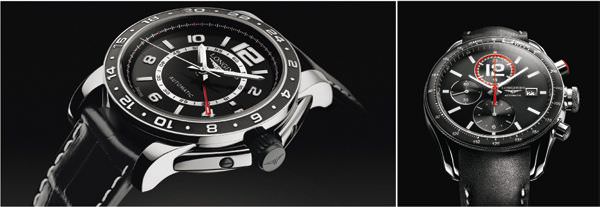
ADMIRAL, GRANDE VITESSE
Frontal attack
This demonstration of the brand’s ‘legitimacy’ (supported by a barrage of public relations efforts) in the field of sports, which, after the Elegance and Tradition lines, should become “the third leg of Longines”, is also the oppor-tunity for the Swatch Group to make a frontal attack on the competition. Up to now, the group had basically ignored this space.
During the press conference, Nick Hayek Jr did not beat around the bush, but frankly admitted that “If Longines’ new positioning in the sports category makes the life of TAG Heuer more difficult, so be it. That’s OK. But we have not done this to hurt TAG Heuer. It is simply the natural evolution of Longines, to which the markets have responded superbly.”
Skiing, tennis (where Longines is replacing Rado), gymnastics, and equitation are just a few of the areas where the brand has already invested its energy, but it also intends to broaden its sports-oriented activities. This is an ambitious project that targets volume (Longines will also work in quartz) while maintaining its own identity. It can be summed up by the slogan ‘There is no performance without elegance’.
The potential for development seems largely open. Longines is sold in 130 countries but “there still remains much to do” notably in the United States, Russia, and India. This doesn’t even include China, the spearhead of the Swatch Group, which claims to have 60 percent of the market share in the Middle Kingdom, where the sports category, helped by the Olympic Games is a rapidly expanding sector.
A Retrograde for the 175th Anniversary
To celebrate its 175th Anniversary, Longines presented two special timepieces. One is a ladies’ watch, the Longines 175 Diamonds, which directly commemorates the occasion with the number of diamonds and a retro appearance. The other is a new watch in the Master Collection called Retrograde. Equipped with a new automatic mechanical calibre developed exclusively for Longines by ETA, this lovely steel watch is available in diameters of 41 mm or 44 mm with three to four retrograde functions depending on the model: day, date, and second time zone with a 24-hour scale to which seconds are added. It features excellent readability and beautiful classic finishing (primarily, lovely silver dials with ‘barley grain’ decoration). The selling price is below CHF 5,000.
Source: Europa Star December-Januar 2008 Magazine Issue

